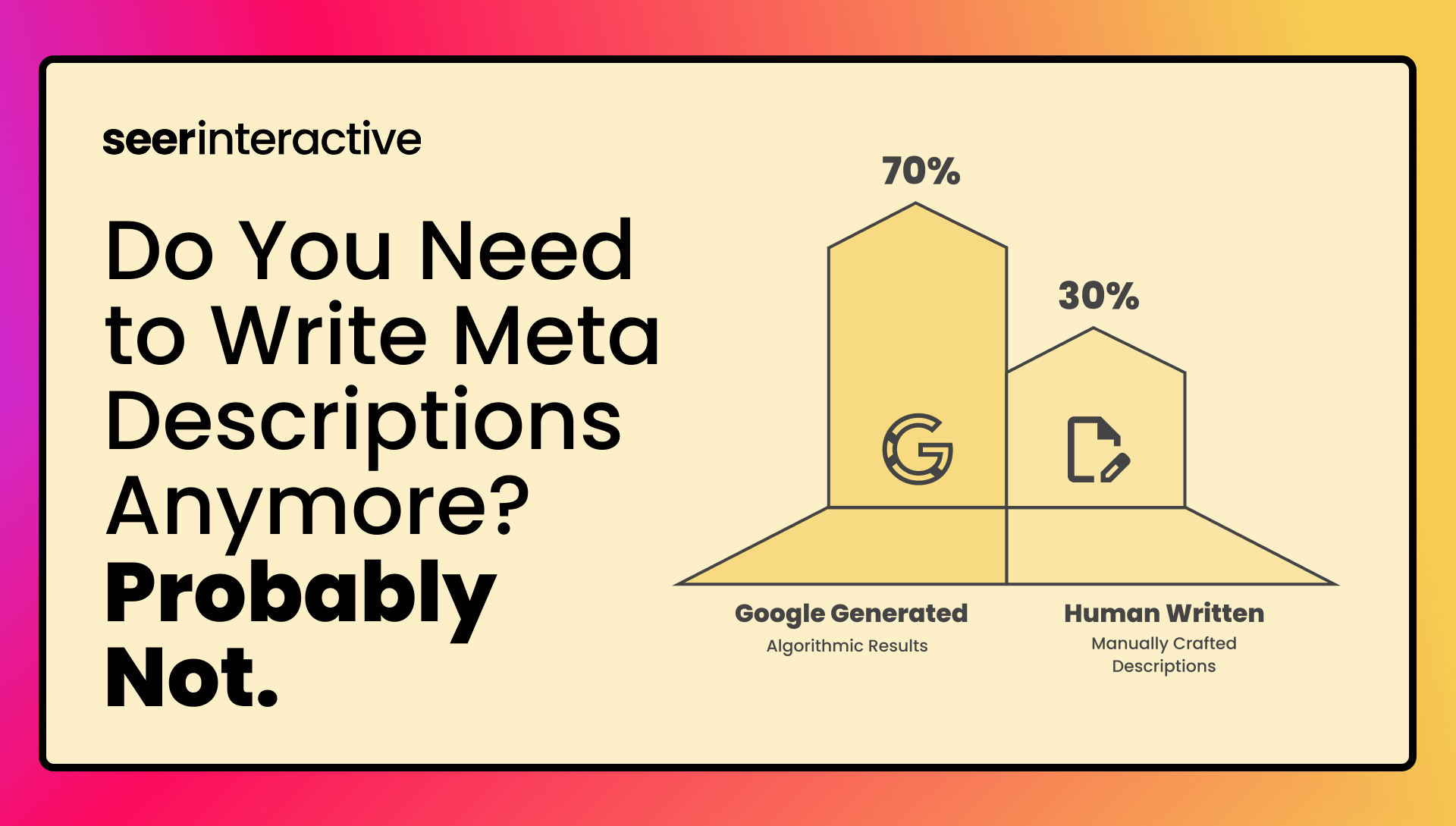Organic Strategies Need to Consider What’s Going on in the Outside World
If we’ve learned anything in 2020, it’s that an organic strategy needs to be agile and take into consideration external factors. When COVID-19 came to town a lot of our project plans for 2020 went out the window - and that was the RIGHT move.
In a world that moves as quickly as ours, holding onto the plans of yesterday isn’t going to do you any favors. It’s important to get ahead of these conversations (where you can) by:
- Monitoring business competitors to identify emerging trends
- Identifying historic patterns to help model the future
- Keeping up to date on the news
Before jumping the gun and ripping up all of your project plans, we strongly recommend reaching out to your client or extended team and opening up a dialogue to talk about how it could impact strategy moving forward.
Monitoring Competitors to Identify Emerging Trends
Dedicate time - whether that’s weekly, monthly, or quarterly will depend on the volatility of your industry - to see what your business competitors are up to. An easy way to keep tabs on their activities is through Google Alerts along with SEC Filings and press releases (if they’re publicly traded).
When looking at business competitors ask yourself, are they:
- Rebranding?
- Updating their value proposition?
- Engaging in M&A activity?
- Unveiling a new product in the market?
Any of these changes should trigger you to investigate further especially if multiple competitors are making similar changes to their business.
Dig into the whys behind each of these moves as it may indicate a shift in industry trends or a change in audience behaviors. Determine what this could mean for your client, and then present it to them in an industry update and schedule time to connect.
For example, in light of COVID-19, Marriott has promoted “flexible cancellation,” “commitment to clean,” and “contactless services.” This is a signal to the marketplace that this type of value proposition may be important to prospective guests.

This may open up a conversation with your client about the idea of audience research and re-evaluating the way they position themselves.
Identifying Historic Patterns to Help Model the Future
Disclaimer: This will not make you a psychic and correlation is not causation, but it is cause for thought.
Whether you’re kicking off a project or you’ve been working with a client for years you should be looking at the client’s data for any hints of:
- Seasonality
- Big peaks and valleys that buck the trend of seasonality
Data sources for consideration include: Google Analytics, Adobe Analytics, and Google Trends
Understanding seasonality can help you and your client set expectations about goals. If they are impacted by seasonality, linear growth goals month-over-month may not be the best way to measure success.
If there are big peaks and valleys that buck the trend of seasonality, you need to investigate as to why at least 5 times to determine the root cause. These insights coupled with keeping up on the news and current events, can help you anticipate ebbs and flows in organic traffic. These are elements that may be outside of your control, but directly impact performance.
Correlation between federal interest rates & financial products:
When the federal interest rate declines, lending products become more attractive than savings products (increasing the demand for mortgages and loans while decreasing the demand for certificates of deposits and savings accounts)

Search demand for “Savings Accounts” (Source: Google Trends)
You should have your pulse on this and be able to communicate it with the client, especially when reviewing performance.
Stay Up to Date on What's Going On in the News
This may seem simple, but it is a great way to show your value to clients. They are likely up to date on their industry news, but these updates go a step further and highlight how these changes could impact organic performance and strategy.
Keep an eye out for:
- If a new business competitor is entering the space
- If current events are impacting your target markets
If a new competitor is entering your industry, this could be a huge shakeup, especially if that brand is well-known in a different space and has a huge marketing budget.
Example Scenario: Apple Card
For example, in Spring 2019, Apple announced that it would be introducing the Apple Card over the summer. For a financial industry client, Apple entering the ring is a HUGE deal. It not only has a marketing budget out the wazoo, but it’s taking a direct hit at banks in its positioning.

You can tackle this type of update by being clear about how this can impact your client. You’ll want to pull in applicable sources (the news article, the primary source if there is a press release) and provide a summary. If the news isn’t new-new and it’s an update, you’ll also be able to lean on search data after there has been some buzz surrounding the new product or competitor entering the field.
Current events, like those surrounding COVID-19 aren’t theoretical, they’re impacting everyone but not impacting everyone the same way. This can have implications on the messaging on the site as well as the entire customer journey.
For example, if your client is a B2B company the businesses they serve are being impacted differently depending on industry and geographic location.
Changes to the core target audience need to be considered in your strategy and discussed with your client.
- These events may be shrinking your target audience, causing increased competition among your business competitors - creating a need for a brand awareness component to your strategy.
- They could also be changing the way your audience perceives your product and its value positioning - a great time to talk about audience research and re-evaluate how the target audience is perceiving the product or brand.
How to Navigate Client Conversations
Be transparent. Deliver a message in writing and then schedule time to talk about these findings. Any type of written communication will need a strong intro, a summary statement, and a conclusion stating exactly what you’ll be doing with this information.
Writing the Introduction
Kickoff this client communication by quickly explaining what the message will include and what you’re hoping to achieve from its delivery.
Example Intro: “In addition to monitoring our competitors from a search perspective, we have been keeping a close eye on their business activity. We are providing a quick update on [COMPANY X]’s recent activity to open up a dialogue on how this may impact [CLIENT BUSINESS] on [Y-DATE & TIME]”
Following the intro, you’ll need to include a one-two sentence takeaway that has the most important information for your client. This is a great way to ensure that if your client only has 5-seconds to read your message that they’re able to glean the most valuable point.
Example Summary: “With [Company X] doing this, it signals [Y]. To counter this, we recommend [Z] to accomplish [Q].
Showcasing Your findings
The middle of the update should go into your data and findings. It should remain high-level so that it is easily digestible for the recipient. Where possible include:
- Bullet points
- Visuals vs words
- Links to sources
Example Middle: If a new player has entered the market, your middle section should outline how this new player entering the ring is impacting your client. Lean on search data like Google’s keyword planner, or Answer the public to help form your narrative.
| Apple Card may be losing momentum. After its announcement in late March there was a surge in searches for Apple Card (+3,600 total searches), but by the end of April they were down over 300% (-880 total searches). However, Seer expects another uptick in July given the recent media buzz.
Not everyone is playing into the Apple cult following. Since the initial announcement searchers have been curious to see how the Apple Card will perform against traditional options and if it's worth taking part in. There has been an emergence of comparison searches, like:
And the appearance of searches to validate Apple Card's credentials:
|
Final Thoughts
Your conclusion will need to include the “so what?” factor. This industry update is not an FYI, it needs to have actionable takeaways.
Example Conclusion: At the conclusion of this message, it is imperative that you make it clear what you are planning on doing with this information. For example:
- What are you keeping your eye on in light of this new information?
- What considerations do you have for how this could influence the project strategy? Middle:
Existing Resources to Keep You in the Know
No one has time to do all the things. That’s why we have multiple articles dedicated to how external factors are impacting the industries in which our clients operate.
- How Banks Can Minimize Customer Frustration Amid COVID
- 5 Tips for Pivoting Paid Social Strategy During Stay at Home Orders




